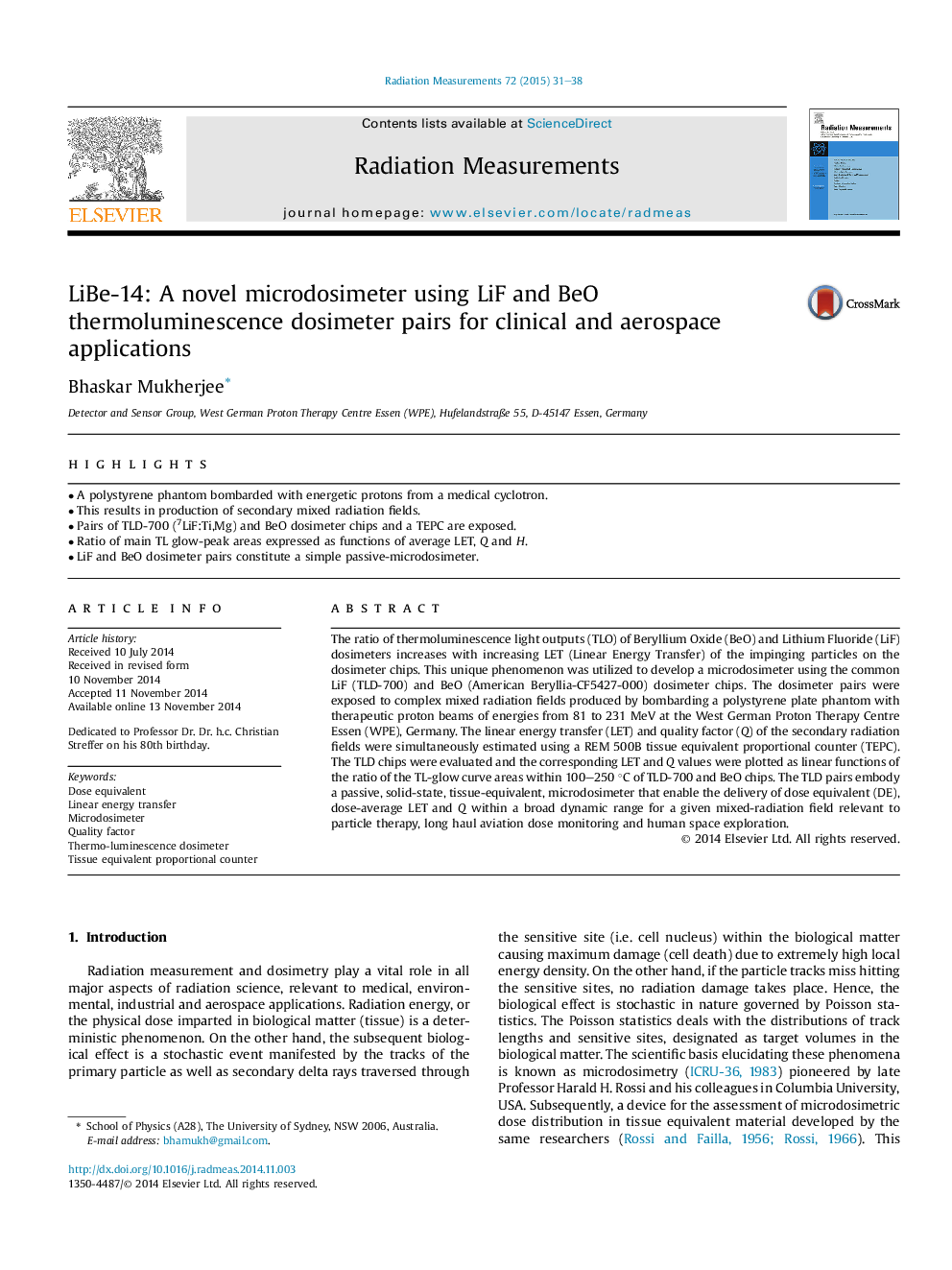| Article ID | Journal | Published Year | Pages | File Type |
|---|---|---|---|---|
| 1881394 | Radiation Measurements | 2015 | 8 Pages |
•A polystyrene phantom bombarded with energetic protons from a medical cyclotron.•This results in production of secondary mixed radiation fields.•Pairs of TLD-700 (7LiF:Ti,Mg) and BeO dosimeter chips and a TEPC are exposed.•Ratio of main TL glow-peak areas expressed as functions of average LET, Q and H.•LiF and BeO dosimeter pairs constitute a simple passive-microdosimeter.
The ratio of thermoluminescence light outputs (TLO) of Beryllium Oxide (BeO) and Lithium Fluoride (LiF) dosimeters increases with increasing LET (Linear Energy Transfer) of the impinging particles on the dosimeter chips. This unique phenomenon was utilized to develop a microdosimeter using the common LiF (TLD-700) and BeO (American Beryllia-CF5427-000) dosimeter chips. The dosimeter pairs were exposed to complex mixed radiation fields produced by bombarding a polystyrene plate phantom with therapeutic proton beams of energies from 81 to 231 MeV at the West German Proton Therapy Centre Essen (WPE), Germany. The linear energy transfer (LET) and quality factor (Q) of the secondary radiation fields were simultaneously estimated using a REM 500B tissue equivalent proportional counter (TEPC). The TLD chips were evaluated and the corresponding LET and Q values were plotted as linear functions of the ratio of the TL-glow curve areas within 100–250 °C of TLD-700 and BeO chips. The TLD pairs embody a passive, solid-state, tissue-equivalent, microdosimeter that enable the delivery of dose equivalent (DE), dose-average LET and Q within a broad dynamic range for a given mixed-radiation field relevant to particle therapy, long haul aviation dose monitoring and human space exploration.
